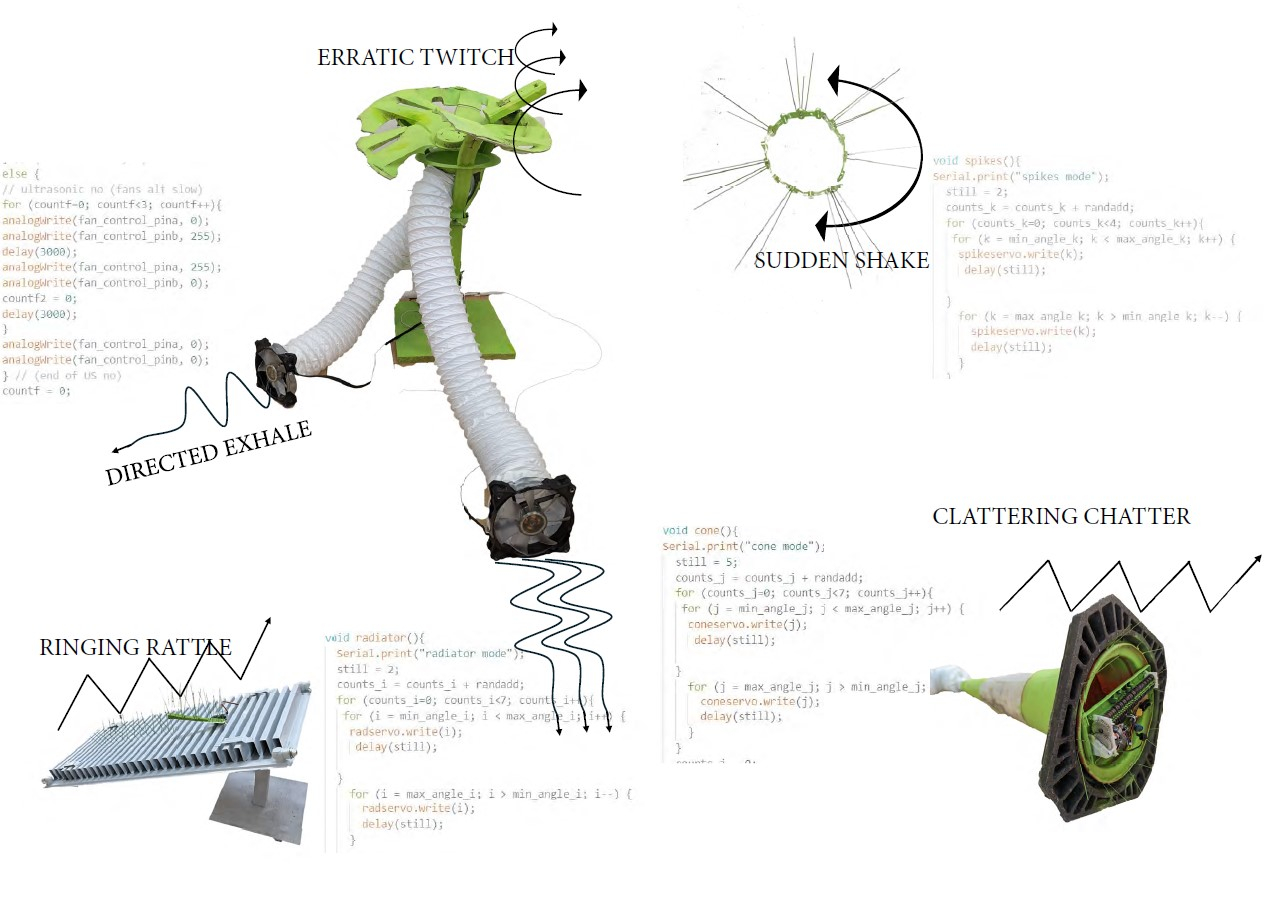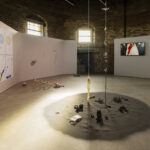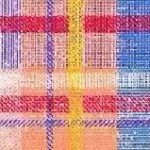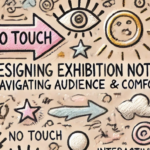- Man and nature (the role of the environment)
- Emotional well-being (individual experience)
- Immersion (empathy and rebirth)
This exhibition unfolds through a three-part spatial structure: Being Reshaped, Experiencing Trauma, and Repairing and Rebuilding. Each phase corresponds not only to a bodily or emotional state, but also to a sensory theme: environmental influence, emotional internalisation, and fluid self-discovery. These sensory layers—originally noted as “human-nature,” “emotion,” “immersion,” and “self”—have now been interwoven into the spatial narrative to clarify their relationship and flow.
As I continue to deepen the third section of the exhibition, Finding Yourself, I have discovered an emerging artist who fits my curatorial theme perfectly – Sorin Bath. Her work is very much at the heart of my exhibition’s concerns – the plasticity of life and emotional vulnerability – and is a unique visual expression of transformation, identity fragmentation and subconscious fluidity.

Sorin Bath’s multi-media installation combines video, costume, performance, and sculpture as she combines a mysterious and mythological visual language with individual emotional experience to create a ‘transitional presence’ between the human and the fantastical. The characters seem to emerge from dreams, myths and fragments of memory. Through the interplay of masks, body movements and sound, she guides the viewer into a fluid world where identity is no longer fixed, but continues to be shaped by emotion, environment and time.

The inclusion of this work in Finding Yourself not only reinforces the exhibition’s discussion of physical memory and emotional metamorphosis, but also expands the immersive sensory experience of the exhibition, as Bath’s work has a dreamlike fluidity of language that provides the viewer with an opportunity to confront the multiple selves within them, and to perceive their own boundaries as they are constantly shifting.
If possible, I would like to present her video documentation in the exhibition, or transform some of her performances into projection installations to enhance the audience’s sense of empathy and participation, so that they can feel the reconstruction of their ‘selves’ in the fluid context of the works.
References:
Bath, S. (2024). Dreaming in Many Skins. ECA Graduate Show 2024. Available at: https://www.graduateshow.eca.ed.ac.uk/portfolio/sorin-bath (Accessed: 22 March 2025).
University of Edinburgh. (2024). Intermedia BA (Hons) – Graduate Show 2024. Edinburgh College of Art. Available at: https://www.graduateshow.eca.ed.ac.uk/programme/intermedia-ba-hons (Accessed: 22 March 2025).
Bath, S. (2024). Dreaming in Many Skins [Video]. Vimeo. Available at: https://vimeo.com/923448442 (Accessed: 22 March 2025).
restless worms on restless legs (2024) © 2025 by Chuni Mao is licensed under CC BY-SA 4.0






s2630451
24 March 2025 — 11:03
Shumiao Cheng’s peer review
1. Immersive Visuals and Conceptual Clarity
The core theme of your curatorial project, Life’s Fragility and Plasticity, is clearly articulated: life is constantly being “shaped, broken, and reassembled” by time, trauma, environment, and technology. From the beginning, you expressed a desire to create an exhibition where viewers could “become one with the artwork”—a space with blurred boundaries and layered narratives. This intention, inspired by installations such as Chiharu Shiota’s Soul Trembling, which weaves personal memories into immersive emotional webs, results in a conceptually coherent framework. Your project is commendable for its immersive, multi-sensory visuals and strong thematic focus.
2. Resonance with My Project “Invisible Control of Time”
Our themes intersect through the lens of trauma and time—trauma often distorts temporal perception, trapping individuals in memory loops. This is where Chuni’s non-linear, memory-infused approach could offer valuable insights for my project. Your emphasis on feminist artists and the fragility of the body also inspired me to take a more “humanized” curatorial approach to time. Reading your blog made me realize that mine lacks a clear presentation of the artworks and artists I intend to collaborate with under each thematic branch.
3. Areas for further development
[1] Range of Artists’ Selection
You mentioned that there may be relatively few artworks directly addressing the theme of life plasticity. However, artistic practices in adjacent fields—such as bioart and posthumanist art—often engage with similar concepts.
I will include some curatorial case studies related to your subtopics in the resource summary at the end of the review to help enrich your curatorial framework.
[2] Participation, Space, and Technology
Your project already incorporates interactivity, but there are still opportunities to deepen audience engagement. The idea of a “recording zone” (as mentioned in your Week 9 reflection) is compelling. However, you might further consider the fluidity and privacy of the exhibition space—how can you guide the visitor’s journey without enforcing a linear path?
Your inspiration from the AR tour of Casa Batlló is a promising starting point. The idea of integrating AR into the exhibition tour, as mentioned in your Week 8 blog, adds an exciting layer of immersion. In response to your inquiry about spatial design and digital expansion, the Post-Life section of the 2nd Beijing Media Art Biennale—particularly the units Data Life, Mechanical Life, and Synthetic Life—offers valuable references. These works exemplify how spatial fluidity and life’s digital/AR augmentation can be effectively realized in curatorial practice. (https://www.cafa.com.cn/cn/news/details/2110349)
Finally, given the sensitive nature of the subject matter, some artworks may evoke personal or collective trauma. To ensure the emotional well-being of visitors, it may be helpful to include content warnings, quiet spaces for reflection, or access to supportive resources. These measures can demonstrate a thoughtful and caring curatorial approach that prioritises audience care and safety.
4. Resources
Externalisation: How the Environment Shapes Life
The art project The Con[tra]cave demonstrates that non-human environmental elements (such as caves, rocks, and geological formations) are not mere backdrops but active agents that profoundly influence and continuously reshape individual life forms and inner perception.
(https://mp.weixin.qq.com/s/KiabNU2stCXKjoffxgjGRA)
Notably, ZHANG Wenxin’s work emphasizes the subtle shaping power of the environment on human emotions, memory, and cognitive processes.
(https://www.zhangwenxin.com/)
Internalisation: Emotional Self-Regulation
In the Perceptual Geography exhibition at A4 Art Museum, artist Dai Guangyu explored the intersection between artworks and the viewer’s inner world, presenting a fusion of space, time, and emotion.
(https://www.inkstudio.com.cn/zh/artists/64-dai-guangyu/)
Symbiosis: The Flow and Reconstruction of Life
In your Week 8 blog reflections, you mentioned wanting the exhibition to evoke temporality and a sense of fluidity, becoming a space that is continuously shaped and reshaped. The exhibition Preserve by Anya Gallaccio may offer meaningful inspiration. Through her use of mutable materials (such as fresh flowers or melting candles), Gallaccio vividly demonstrates the effects of external conditions (time, humidity, temperature), allowing viewers to intuitively experience the transformation of material life from beauty to decay.
(https://turnercontemporary.org/whats-on/anya-gallaccio-preserve/#gallery)